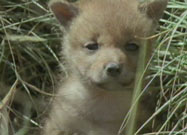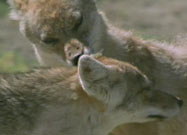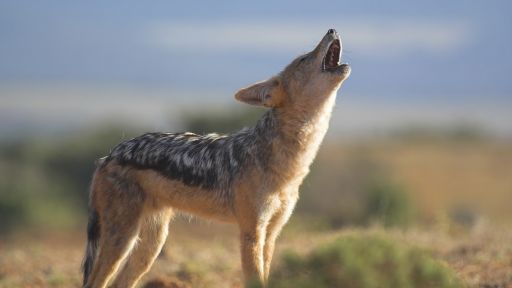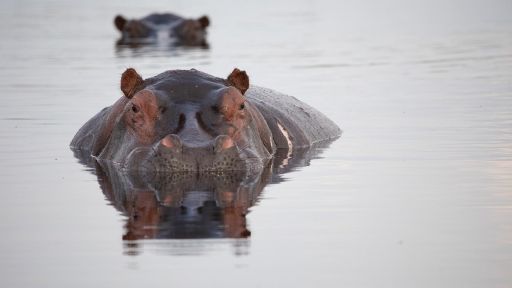While jackals may never shake their negative image in some cultures, one researcher has done much to popularize a deeper understanding of the complex and highly social animal profiled in NATURE’s Jackals of the African Crater.
In the late 1960s, American animal behavior researcher Patricia Moehlman joined chimpanzee expert Jane Goodall to study jackals in East Africa. For months, she followed the golden jackals of Tanzania’s Ngorongoro Crater as they fed, fought, and raised families.
That taste of jackal life sparked a lifelong interest in Moehlman. In the mid-1970s, she returned to Africa’s wildlands — this time the nearby Serengeti Plain — to study jackals. Indeed, she was the first woman to gain permission to conduct research on the Serengeti, long considered a man’s scientific world. Soon, Moehlman had been dubbed “the jackal woman,” a phrase that later became the title of a well-received book about her work, which continues today.
Moehlman’s years of study have revealed much that was unknown or poorly understood about jackals. In particular, she has shed light on the important role of adult “helpers,” young jackals who remain with their parents to help raise the next litter of pups. Once, some scientists scoffed at the notion that some animals would pass up a chance to produce their own young in order to raise their brothers and sisters. But Moehlman’s work showed that, in some cases, it makes perfect sense to help raise your kin rather than your own kids.
Evolutionary ecologists call the concept “kin selection.” In essence, the idea is that helpers gain genetic benefits from hanging around to help relatives. One benefit is that the helpers learn how to be successful parents, making it more likely that the helper and its pups will survive when it comes time to breed. In addition, the helpers can aid the survival of their younger brothers and sisters, increasing the chance that more of their common gene pool is passed along to future generations.
Moehlman’s studies of golden jackals, for instance, show that a mating pair successfully raises, on average, one pup per mating season when on their own. With helpers, however, “more pups survive,” Moehlman notes. “Add a helper, and you add a pup.”
But she is still combing through her data for clues to understanding jackals, the helpers, and their habits. One intriguing question, she says, is “why some offspring stay and help, while others leave and try to establish their own territories.”
While many researchers rely on trapping, tagging, or blood tests to conduct kin selection studies of wild animals, Moehlman’s jackal work has taken a more hands-off approach. She has relied on her powers of observation to keep track of family links, learning to identify specific animals by telltale marks, such as facial scars. “It is bad science to intervene with animals in ways that affect their behavior and survival,” she recently told SCIENTIFIC AMERICAN, explaining her research philosophy.
In addition to her research, Moehlman has also taken on several important causes. She is committed to increasing Africa’s supply of trained researchers, and has worked closely with universities in Tanzania and other African nations to improve training and ensure that African scientists play a greater role in studies on their home continent. She has also become an active conservationist, working with local people to ensure that threatened populations of wild horses, asses, and zebras get the protection they need.
In the meantime, her documentation of jackal behavior — from the role of helpers to their lifelong mating commitments — continues to help improve their reputation among people. Jackals, she notes “can be role models for humans.” With greater understanding, she says, “animals that people once feared become objects of admiration.”












